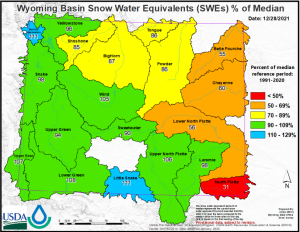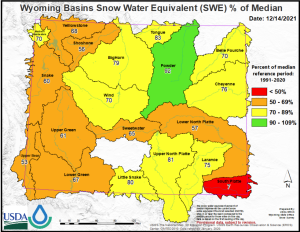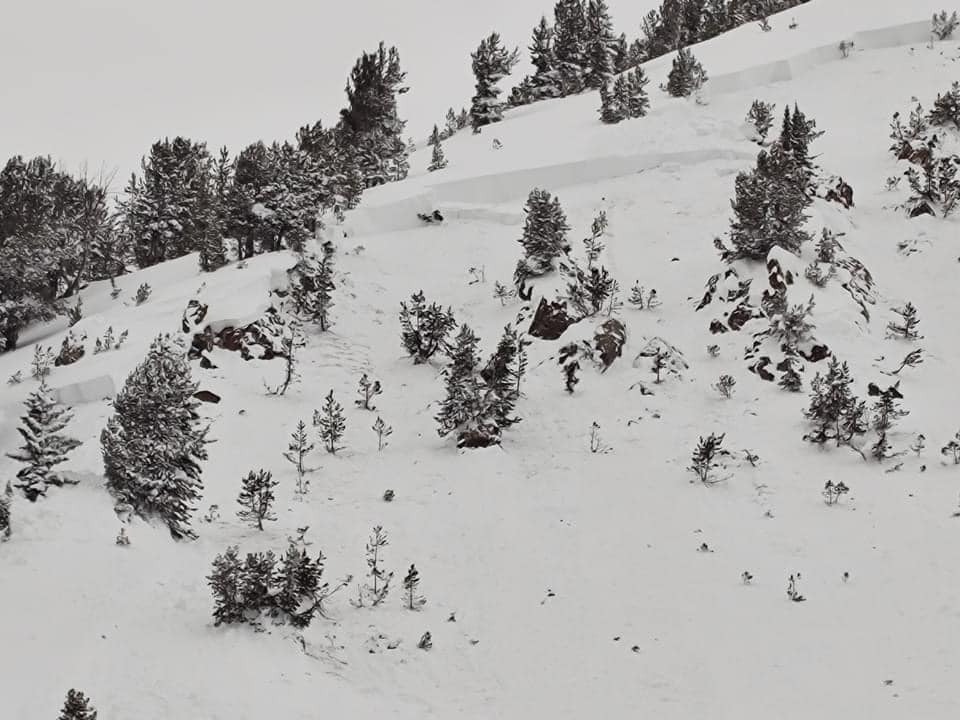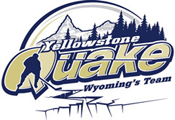December Weather Helps Build Up Wyoming’s Snowpack
Written by Andrew-Rossi on December 29, 2021
Snowy weather is exactly what Wyoming’s snowpack needs, as the snow in the state’s western basins starts to average out after a concerningly dry fall.
Every aspect of Wyoming relies on its winter snowpack. The melted snow fills the state’s aquifers and reservoirs, sustaining the state’s agriculture, animals, and people.
The Wyoming Natural Resources Conservation Service releases reports on Wyoming Snowpack and Snow Water Equivalent throughout the winter. The first reports of the winter have been discouraging – basins across the state were well below their median amount of snowpack.
Thankfully, the latest report – released on Dec. 28 – has a much better outlook.
In late December, ten of the 19 basins in Wyoming are at, near, or above their median snowpack levels.
Compared to just a few weeks earlier – Dec. 14 – the differences are apparent.
Currently, Wyoming’s snowpack/S.W.E. is 88% of the historical median. The basin high of 111% at the Madison Headwaters in Yellowstone National Park and Little Snake in Carbon County. The basin low of 31% is in South Platte, right at the SE corner of the state.
This isn’t just an improvement over this year. At the same time, in Dec. 2020, the statewide snowpack was 80% of the historical median. But it’s lower than Dec. 2019, when the snowpack was at 107% of the median.
While it’s still too early to predict how much snow we will get this winter, these numbers matter regardless of the time and place.
The Western Hemisphere is still amid La’Nina – an ocean-atmosphere phenomenon that occurs every few years and can last for up to five months. It can simultaneously lead to intense storms and droughts.
La’Nina brought above-average snowpack to Cody and Yellowstone National Park in December 2020. But that surplus didn’t flow into spring, with reservoirs throughout the Bighorn Basin below their average capacity by June.
Historically, La’Nina tends to favor northern Wyoming, bringing lots of rain and moisture. But this doesn’t bode well for southern Wyoming, which will continue to be drier than average – and the region is already amid a persistent drought.
More snow will fall on Wyoming’s western and southern mountains over the next week, accompanied by the same freezing cold temperatures.



